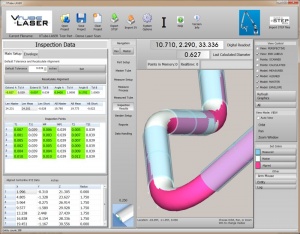Difference between revisions of "End-Scan Using the Scissor Motion"
From ATTWiki
(→Why the End-Scan technique is important) |
(→About the Scissor Orientation - Easy But Least Precise) |
||
| (3 intermediate revisions by one user not shown) | |||
| Line 15: | Line 15: | ||
| − | === | + | ===About the Scissor Orientation - Easy But Least Precise=== |
<table cellpadding=10> | <table cellpadding=10> | ||
| Line 21: | Line 21: | ||
<td width=500> | <td width=500> | ||
This end-scan method is useful for ease-of-use and quickness, however it is the least precise of the techniques. | This end-scan method is useful for ease-of-use and quickness, however it is the least precise of the techniques. | ||
| + | <br><br> | ||
| + | You can expect about 0.1 inches (2.5mm) of repeatability in end lengths when using this method for end scans. | ||
<br><br> | <br><br> | ||
We also recommend these techniques: | We also recommend these techniques: | ||
* [[End-Scan Using the End Wall]] | * [[End-Scan Using the End Wall]] | ||
| − | * [[End-Scan Using End Targets]] (most precise) | + | * [[End-Scan Using End Targets]] (most precise) |
</td> | </td> | ||
<td width=300> | <td width=300> | ||
Latest revision as of 15:20, 1 December 2016
|
|
About the Scissor Orientation - Easy But Least Precise
|
This end-scan method is useful for ease-of-use and quickness, however it is the least precise of the techniques.
|
Measure Setup
|
How To Use This End-Scan Technique
|
Other Pages
- See also End-Scan Using the End Wall
- See also End-Scan Using End Targets
- Back to VTube-LASER



